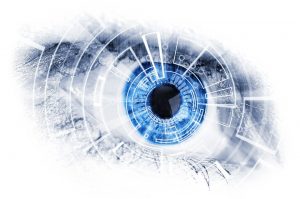Artificial Intelligence: a look into future
It was hard to imagine 10 years ago that technologies could race so far. We have long said goodbye to diskettes and cellphones without sensor screen. Smart gadgets and artificial intelligence have become an integral part of our lives. We are not surprised when virtual assistant in smartphone recognizes our voice and tells us the way to the nearest coffeehouse, or when Amazon interface individually displays products to each visitor in accordance with their preferences. But may we use patterns for editing big data and keyword analysis for AI?
 The goal of AI is to make intellectual systems perform creative functions that are traditionally considered the prerogative of a human. Teaching the computer system not just to think, but to think like the human brain has been a difficult and ongoing task for the last 50 years.
The goal of AI is to make intellectual systems perform creative functions that are traditionally considered the prerogative of a human. Teaching the computer system not just to think, but to think like the human brain has been a difficult and ongoing task for the last 50 years.
Compared to multifunctional “natural” intellect, recent artificial intelligence is rather primitive. It is created for specific purposes and able to complete narrow tasks, each of which is isolated from another from the computational point of view. This means that AI can beat humans in strategic games, but if it faces a moral dilemma, it goes nowhere.
Empowering robots with artificial intelligence is one of the emerging trends in current science. Right now, artificially intelligent robots are part of the workforce, but this is just the beginning. Scientists from Cornell University have developed an AI system that will use robots instead of people in such dangerous works such as mine lifting, cleaning the area of nuclear waste, and the removal of debris after a flood or hurricane. In 2016, an evolving genius machine—humanoid robot Sofia—was presented at the Web Summit in Lisbon. She looks, talks, and thinks pretty much like a human. The coexistence of humanity on an equal footing with high-intelligent machines is a long way off. Ben Goertzel, chief scientist of Hanson Robotics, says the first step is humanoid robots that can understand and engage with humans.
Nick Bostrom, the founding director of the Future of Humanity Institute at Oxford University, sets out predictions of the scientific community about AI in his book “Superintelligence: Paths, Dangers, Strategies.” He talks about intelligence in combination with intuition and logic. This type of intelligence can experience the surrounding world, coping with its uncertainty. The most interesting thing about achieving the human level of intelligence is not the achievement itself, but what will happen next. After machines can reason and improve themselves, only sky is the limit.
According to Massimiliano Versace, CEO and President of Neurala Inc., Director of Boston University Neuromorphics Lab, in 10 years, the line between software and AI will be blurred. The AI of the future will strengthen the platform of in-depth training and peripheral computing, just like how a person relies on the work of several brain regions.
Market expectations
Over the next five years, the market for AI and cognitive systems expects a compound annual growth rate of 55.1%. The widespread use of AI has led to increased revenues for companies promoting products using cognitive technologies. “Accenture” predicts that by 2035, artificial intelligence will double the rate of economic development. According to market intelligence firm “Tractica,” the revenues for companies promoting products using artificial intelligence in the world will grow from 643.7 million dollars in 2016 up to 36.8 billion dollars in 2025.




